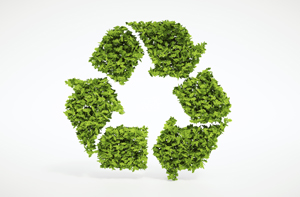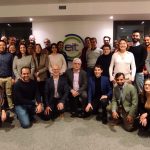From the viewpoint of circular economy, a large share of products would still need improvements, particularly as regards the choice of materials and the case of residues. We also need to change our way of thinking and we need more information in order to leverage the unused potential of secondary materials.
Trends affect the product cycle
In its report “Circular by Design”[1], the European Environment Agency[2] examined the impact of product trends on product cycles. The report highlights a positive trend, modular design, which extends the life cycle of products with the help of easy remanufacturing and repairability. Other trends that support circular economy include the services developed around products and shared use, such as making the use of products more efficient.
The development of circular economy is slowed down by complex product design and increased functionality. On the other hand, functional materials may make the use of materials more efficient, but, generally speaking, heterogeneous and complex materials are difficult to reuse and recycle, especially if actions after end-of-life are not designed properly. In other words, increasing complexity and functionality hamper the cycling of materials.
3-D printing, the Internet of Things and the development of markets for recycling are examples of “hot” developing trends, the impacts of which still remain unclear from the viewpoint of circular economy: each one of the above-mentioned trends contains both positive and challenging factors:
- 3-D printing, or other additive manufacturing technologies, enable local production and improve material efficiency, but, on the other hand, high level of customisation may make the shared use of the products involved more difficult, and the use of many materials in products can negatively impact their recyclability.
- The Internet of Things (IoT) enables such functions as product tracking and product information management, but may contribute to increasing product complexity and use of critical product materials.
- The markets for recycling support business models related to recycling, but focusing all resources on recycling may reduce incentives for remanufacture and reuse of products and materials.
Let us not forget the secondary raw materials
In addition to the trends described above, it is good to recognise the potential of secondary materials.
There is no general definition for secondary raw materials, but they typically include waste materials (e.g. mine tailings), side streams (e.g. slag and ashes), processing residues, material removed during product life cycle, and the products and their materials that have reached the end of their life cycle.
Waste-free production is not always possible, since the current production processes generate waste or side products, and the product life cycle is not necessarily very long. The large volume of waste material generated beside our actual product may come as a surprise to many. An example: according to report “Growth within: a circular economy vision for a competitive Europe”[3], we recapture only 5 percent of the raw material value after the first use cycle. Are we really going to forget these lost materials? When discussing sustainability and climate, the focus is often on gaseous air emissions. But what about the solid “emissions”?
Should we change our conception of such “waste material” and, from this point forward, start calling it raw material or material instead of waste?
Should we raise the bar higher? In addition to using secondary materials for such purposes as soil improvement, road construction and filler material, we could aim for high-added value materials and products given an equal status alongside primary materials.
The idea about using and utilising waste materials for functional purposes in particular is good, but there are still major challenges in making that happen, and also concerns such as potential hazardous substances.
The utilisation of secondary materials requires openness, a change in our way of thinking, research and development, scientific competence and pilot production lines. And even more important, contributing factors include enthusiasm, commitment, securing safety sufficient competence and the ability to see the potential of new initiatives in terms of business development both within industry and research.
In addition to idea generation and technical challenges, we are also facing challenges related to ways of thinking, trust, openness, value chain co-operation, markets, legislation and taxation, and getting them solved depends on our common will to do so.
[1] https://www.eea.europa.eu/publications/circular-by-design
[2] https://www.eea.europa.eu/
[3] https://www.ellenmacarthurfoundation.org/assets/downloads/publications/EllenMacArthurFoundation_Growth-Within_July15.pdf
This article was originally published here on the VTT blog by Päivi Kivikytö-Reponen. VTT is one of the SCRREEN project partners.
ACCESS ORIGINAL POST HEREComments are closed.






 The SCRREEN3 project has received funding from the European Union's Horizon Europe Research and Innovation Programme under Grant Agreement N° 101138060
The SCRREEN3 project has received funding from the European Union's Horizon Europe Research and Innovation Programme under Grant Agreement N° 101138060